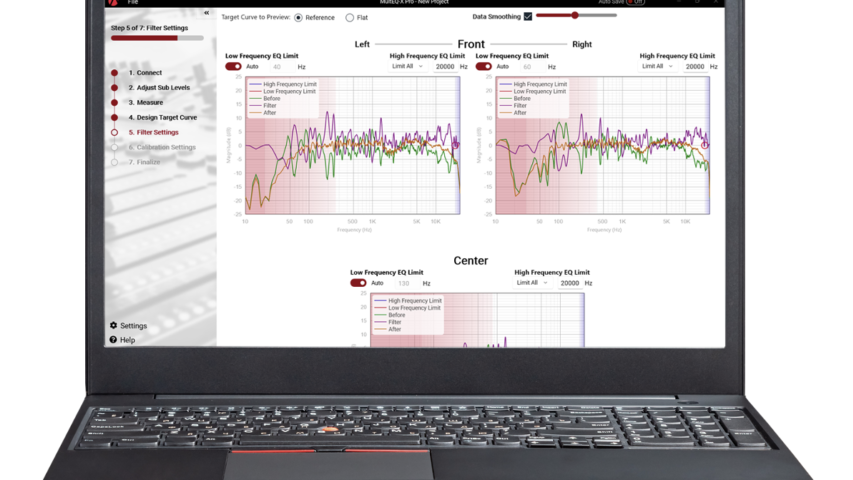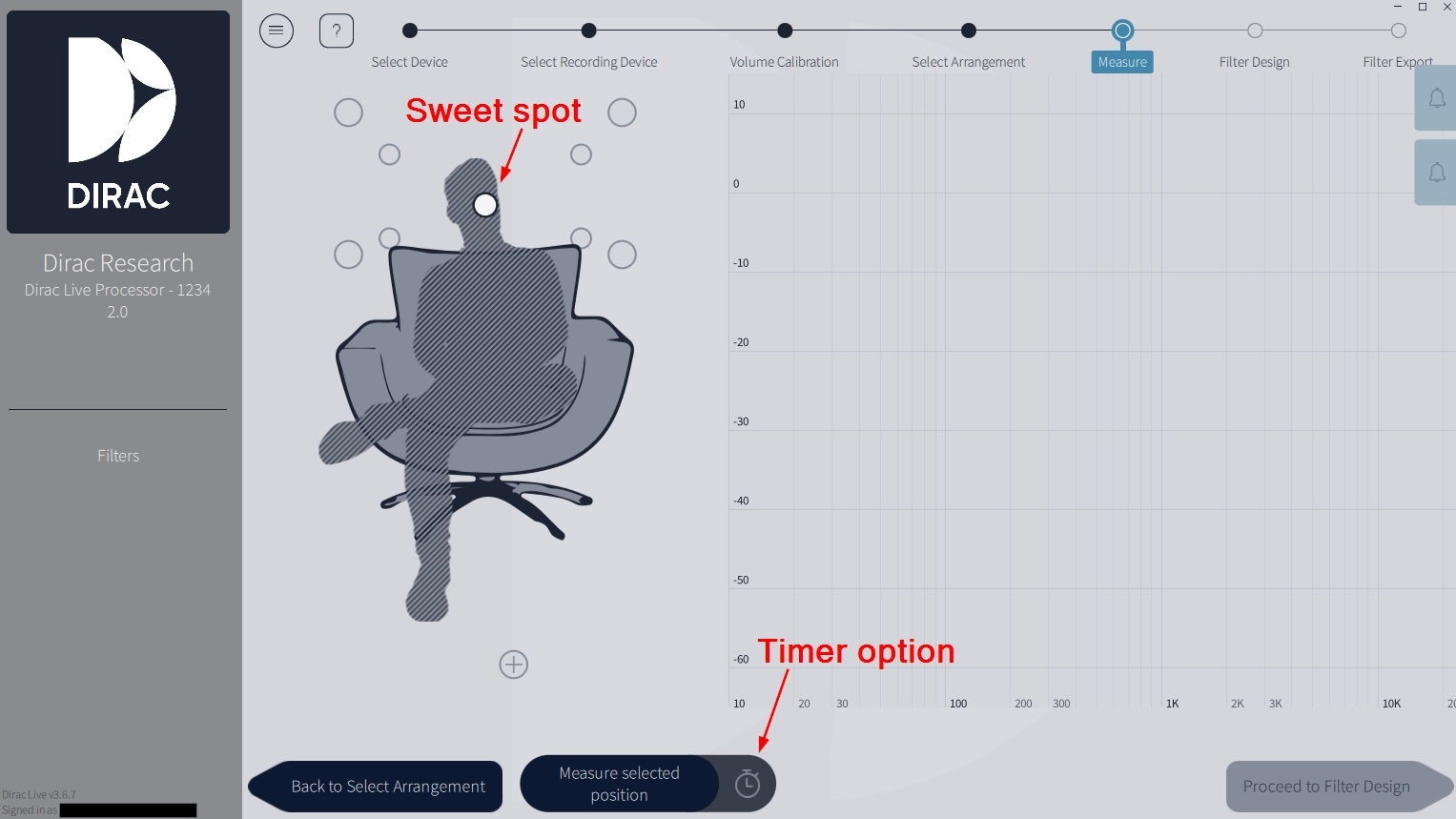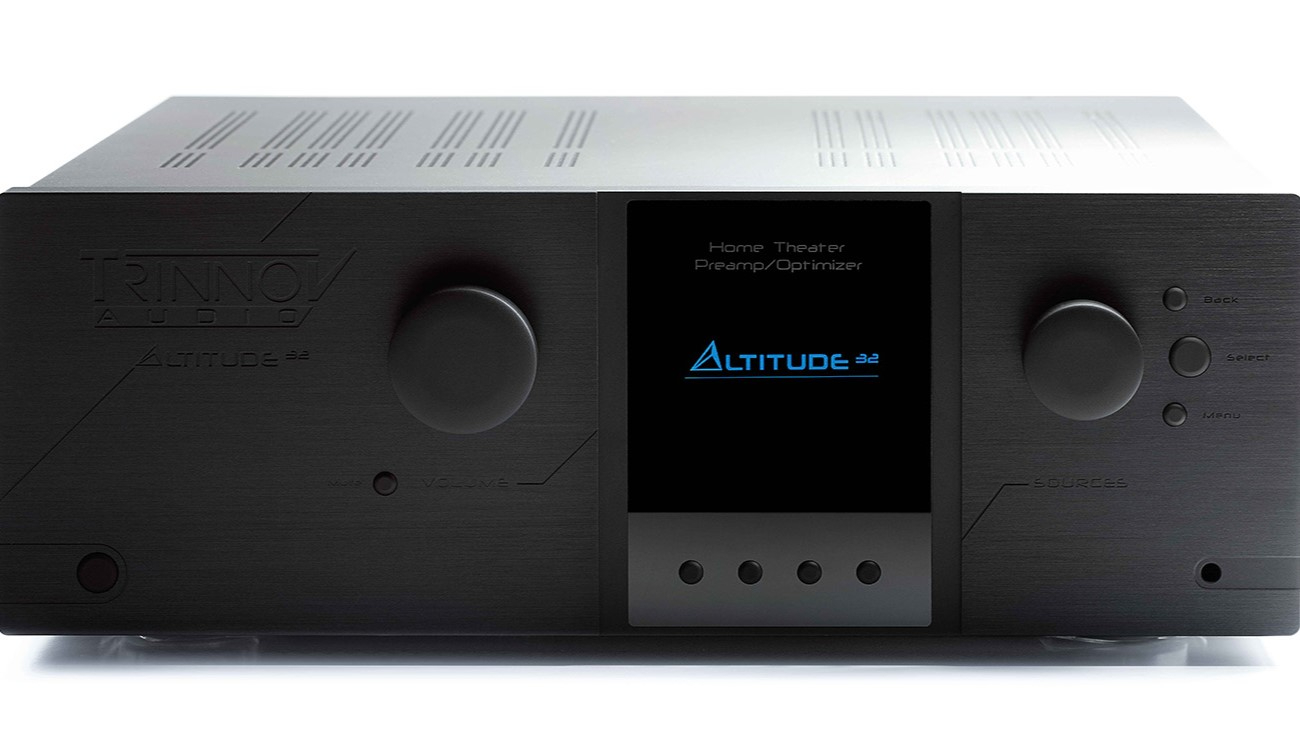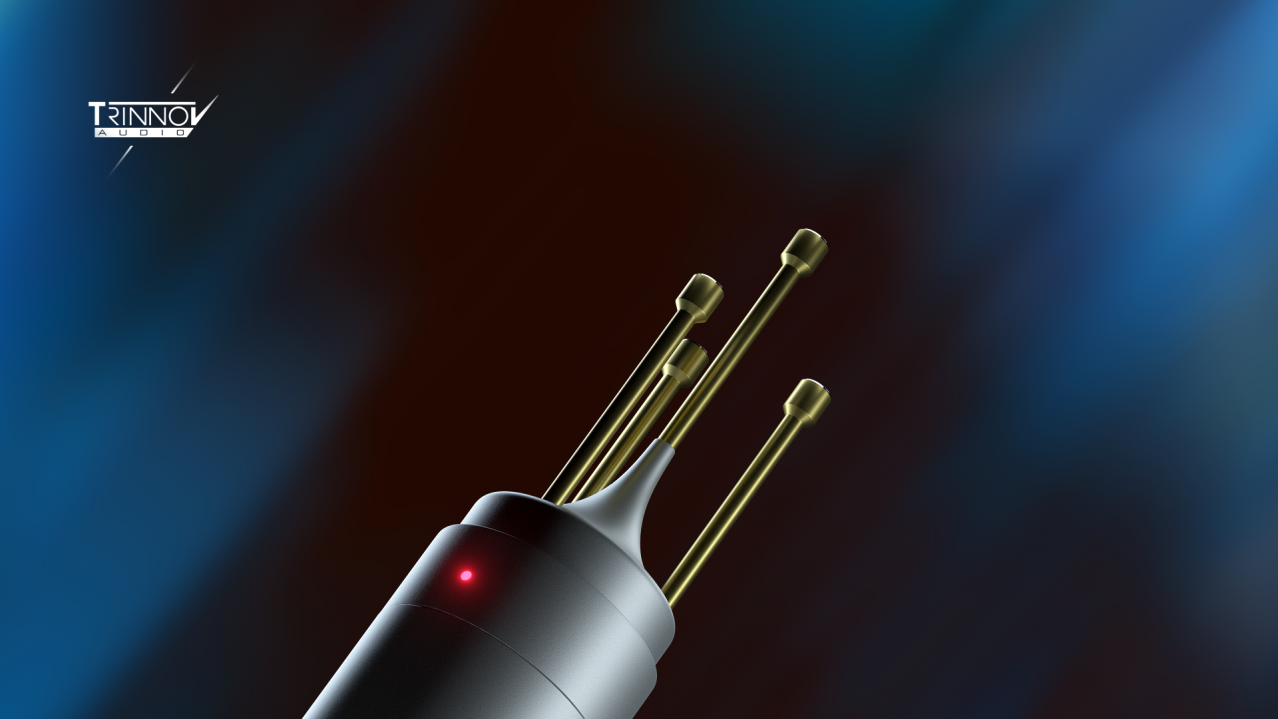What’s your AV receiver’s most valuable feature? Dolby Atmos surround? HDMI flexibility? Lotsa of watts from lotsa channels?
The answer is none of the above: it is the “room correction” system embedded in its setup routines. “Room correction” is a broad term that encompasses two major functions. First, the sensing, and measurement of the room acoustics in which the system finds itself and of the loudspeakers it employs; second, the calculation and implementation of “corrective” filters – equalization – to optimize the speakers and to mitigate, to at least some degree, room effects.
First, alas, a bit of acoustics. Any room will have what is termed “modes,” which are areas of lower and higher pressures, and thus sound intensities, dictated by the dimensions of length, breadth, and height. (Non-rectangular spaces make things much more complicated, but just considering shoebox-shaped rooms is plenty for our purposes.)
As an analogy, the same thing happens in a calm swimming pool when you toss in a coin: as the ripples reflect from the walls in all four directions, areas of steeper ripples and flatter, calmer water will evolve, as the waves bounce back and forth, some “in phase” creating the ripple-ier areas, and some “out-of-phase” yielding flat water. Back in our listening room, because low frequencies – bass – are, for reasons we needn’t go into here, effectively omnidirectional, these suffer the strongest, and most troublesome impacts of room modes: areas of stronger, sometimes very much stronger bass, and areas where bass is weak or even almost nonexistent.
You can demonstrate this to yourself by playing a music track with strong, regular bass and moving around the room. Stick your head in a corner near floor level, and you will always hear powerful, pounding bass, while at some places out closer to the center of the room, the bass will sound weak or even altogether absent.
Room correction technologies: what they do
Table of Contents
Enter room correction: technology that can make real loudspeakers interacting with real rooms perform better. Room correction systems are found in nearly all AV receivers (AVR) and preamp/processors these days, and in some stereo, powered-loudspeaker, and preamplifier components, too. There are myriad “brands,” the most widespread being Audyssey and Dirac, but several major manufacturers have proprietary systems as do a few less widely known high-end and specialty makers. In every case, in terms of what they actually do, these all tackle substantially the same tasks: identify the number and “size” (low-frequency capabilities) of the system’s speakers and each one’s relative loudness; determine each speaker’s distance from the listening position and set delays such that each one’s output arrives there simultaneously; and lastly, create and implement filters to tame the worst of the room modes’ unwanted emphases.
In the most common scenario, when you enter an AVR’s “setup menu” routine you are encouraged to initiate an auto-correction routine, which begins with plugging in a small measurement microphone included with the receiver (a few high-end exceptions require you to supply your own, higher-performing mic), and place it at your main listening position at head height. You then press the “go” button on the on-screen menu, which begins a series of test signals, which may be clicks, chirps, or swoops, that sequence through all the speakers connected in your system: usually, left, center, right, left/right-surround, and subwoofer, plus any rear, side and overhead or “height” surround channels that are present. As each click, chirp, or swoop is “heard” by the microphone, the not-so-small computer inside the receiver, preamp, or whatever analyzes two things: the precise arrival time of each frequency contained in the test signal, and the amplitude (loudness) of each of these as well.
The system now has a precise “map,” in both the time- and amplitude domains, of the performance of each speaker. It knows how far away it is, to within a millimeter or so, and how loudly or softly it is reproducing each important band of frequencies: deep bass, mid-bass, midrange, treble, and so on. It can thus set important parameters for each speaker: “distance” (time-delay) so that all sounds reach the ears perfectly aligned in time; “size,” selecting a crossover point that frees each speaker from trying to reproduce deeper bass than it is capable of and directing this to the subwoofer; and equalization, a “turning up” or “turning down” of precise, narrow-band virtual “tone controls” that compensate for – “correct” – the impact of the room modes on each speaker, in each location.
An important note: while room correction can be quite effective at reducing the frequency response peaks induced by room modes, they can do little to mitigate the attendant dips: pouring gallons of water into an unplugged sink still doesn’t fill it up. So setting up a listening room’s speaker and listener locations to avoid the worst of these nulls remains important.
Now, this map only applies to one microphone position, and because room modes are so spatially fickle (and because all speakers are less than perfectly omnidirectional above bass frequencies), as soon as you slide over on the sofa, these corrections are now less correct – sometimes a lot less. Thus, since none of us listen or watch with our head in a vise, and most of us do so in company, most room correction systems repeat the process using additional microphone positions: typically, a few feet to either side and forward and back. Importantly, after the MLP (main listening position) the exact location of subsequent mic locations is not terribly important; it’s the difference in responses from one placement to the next that allows the system to analyze the room, and to then calculate an averaged correction map that will mitigate the worst errors for everyone on the couch (or in a few rows of a big home theater), more or less equally.
Room correction technologies: how they do it
All room-correction systems rely on DSP – digital signal processing – to perform the necessary audio manipulations. Consequently, sounds received by the setup mic are first transformed into digital audio signals that can be analyzed and massaged by the DSP hardware (effectively, a dedicated digital audio computer) within the AVR or other component, as will be all music or movies played back using room correction. There are a few different technical types of digital filters the different systems employ, for which pencil-protector partisans will argue various virtues and drawbacks, but all of this is relatively unimportant to us here.
What is important is that regardless of type, digital filters can transform very narrow bands of sound without modifying adjacent bands, and without seriously impacting overall sound quality, something impossible for earlier-era analog filters.
What’s the Upside?
The most obvious benefit of room correction is smoother, more accurate bass. Typical room modes often boost relatively narrow bands of bass (an octave or so) by vast amounts (10 dB is not unusual), and diminish adjacent ones by similar degrees. As a result, some bass notes will boom while others all but disappear – not good. Just as egregiously, all this “bass build-up” reflects around the room, muddying our perception of the midrange octaves so critical to timbral naturalness, detail, and spatial cues. So while more accurate bass may seem the tallest trophy, to many ears the clarifying and “focusing” of vocal and instrumental elements, and the revealing of a recording’s acoustical-space signature yielded by effective room correction are at least as valuable.
What about the treble? This is a thornier subject. Many experts feel that room correction above the lower midrange is not warranted, because room modes don’t hold sway (unless you’re in a really tiny closet) below a few hundred Herz. However, if the speakers in use have substantial response errors in the mid and high-frequency octaves, room-correction systems can measure these, and equalize accordingly. Many systems let the user set an upper limit to the correction process.
Another important feature offered by most room-correction systems is a “target curve.” Research has long shown that listeners find an overall response that slopes very gradually downward from the bass frequencies to the highest treble sounds more convincingly lifelike. So most correction systems include the ability to select one or more such curves, integrating all the speakers to conform to it. A few have such a curve baked right in, though most offer user selection of one or two such choices.
Where it came from
Acoustical scientists have been studying the behavior of sound in rooms since at least the 19th century, but only in the past few decades have we become able to do much about it other than moving around our speakers and our heads to find the most acoustically advantageous locations. (And Murphy’s Law being what it is, these are almost never where other, less audio-afflicted residents want the speakers and the sofa. Many a divorce lawyer’s boat has been purchased with the proceeds.) This is because, for deeply technical reasons, analog equalization such as that employed in old-fashioned graphic equalizers or bass and treble controls was not very effective at taming modes. But with the advent of digital audio came the ability to shape digital equalization algorithms that can modify very narrow frequency bands, and manipulate time-domain behaviors with great precision.
This sort of research was ongoing throughout the latter fourth of the 20th century, but its first commercial manifestation came from an academic project at the University of Southern California under the aegis of Film School professor Tom Holman, he of THX fame, and engineering school professor Chris Kyriakis. From this study grew Audyssey Laboratories, which licensed its initial commercialized solution, Audyssey MultEQ, to a handful of AV receiver makers. By the mid-2000s, Denon, Marantz, Onkyo, and numerous other makers were incorporating Audyssey room correction in their AVRs, while several others developed their own proprietary systems by 2010 or so.
Meanwhile, at around the same time in Sweden and France, similar research projects spawned two more “corrective” firms. Dirac Research AB, a Swedish company, today offers its Dirac Live range of audio correction technologies for home, car, studio, and other sound environments. Dirac does much the same things as Audyssey, though its technical underpinnings are a bit different.
The French project, which evolved from studies of spatial audio recording and reproduction at Paris’ famous IRCAM music and acoustics research center, yielded Trinnov Audio. Trinnov began by providing acoustical and spatial hardware and software in the pro-audio space, but in the past decade has branched out into becoming a hardware manufacturer as well with its Altitude range of 16-, 24-, and even 48-channel (!) home-theatre preamp/processors. These incorporate sophisticated acoustic-correction technologies dubbed the Trinnov Optimizer.

Audyssey MultEQ
Audyssey was the first to bring room correction to market. Its latest version, called MultEQ-XT32, is found in most Denon and Marantz AVRs (and in McIntosh’s AV processors). XT32 runs on the hardware within the AV receiver or preamp to implement the actual filters (corrections), controlled through its on-screen display. A bit less powerful, MultEQ (no “XT32”) may be included on some lower-end models, and numerous older, discontinued ones, including some from Onkyo/Integra among others. Notably, the XT32-flavor Audyssey can integrate up to four individual subwoofers, effectively creating a single, coherent bass system tuned to the room. Audyssey also offers the MultEQ Editor iOS/Android app ($20, around £15 / AU$30), which displays response curves, enables more detailed correction options, and delivers user-modification abilities not available otherwise.
The firm’s rather confusingly named MultEQ-X is a Windows-only PC application, available only at the Microsoft store, that does all these things and a lot more. Using the outboard computer’s horsepower, MultEQ-X delivers more detailed correction and user-tailoring options and displays. The Windows application itself is free, but you must buy an individual license ($200, around £150/ AU$300) for your specific AVR model. (There is, alas, as yet no MacOS version.) Any AVR compatible with the MultEQ Editor (most Audyssey-enabled hardware from the last two or three years) can use MultEQ-X.

Dirac Live
Dirac Live is also encountered on many current AV receiver models, including most of the same Denon and Marantz models featuring Audyssey MultEQ/XT-32, plus some from Arcam, Emotiva, Integra, NAD, Pioneer, and a few other, less commonly seen brands. Unlike Audyssey, Dirac requires external hardware: an iOS or Android smartphone or tablet, or a Mac or Windows computer. The corresponding softwares are all free, but you must purchase a license for your hardware, and several licensing tiers enable features beyond the basic room correction. Licenses start at $259 (around £200 / AU$380) for Dirac Live Limited Bandwidth, which cuts off correction at 500 Hz – plenty for the majority of room-correction benefits. The Full Bandwidth (up to 20 kHz) version is $100 more. Dirac Live Bass Control Single Subwoofer, which delivers enhanced integration and accuracy to a single sub, is a $349 (around £265 / AU$515) add-on, while a multi-subwoofer version is $499 (around £380 / AU$740). Upgrades from one version to another are available at no penalty, and a couple of bundles save a few bucks, but anyway you slice it Dirac Live is not an inexpensive feature.

Trinnov Optimizer
France’s Trinnov’s Optimizer is arguably the most powerful room-correction system, but it’s also the least widely found: Trinnov is only applicable to the firm’s own line of AV processors, which start at an eye-watering $18,500 (around £14,1000 / AU$27,325). There’s also a JBL surround processor derived from a Trinnov model.
Trinnov components are bundled with a unique, multi-point microphone that the firm claims collects much more precise room data, including time-domain and phase info, which the Optimizer can use to time-align loudspeakers so that sound from individual drivers arrive simultaneously. (The importance of such phase issues is much debated, since midrange and treble sounds inevitably reflect from multiple room surfaces multiple times, creating far more complex time-domain “errors,” and in fact swamping the direct sound reaching the ears first.) Trinnov’s Optimizer also incorporates a speaker “re-mapping” feature to acoustically shift speakers that are forced by room layout to be less than optimally located.
The Next Wave
Recently, both Dirac and Trinnov have previewed a new wave of room-correction technologies: active low-frequency correction. Dubbed “Active Room Treatment” by Dirac, and “WaveForming” by Trinnov, in their broad outlines these seem generally similar. Both require fairly elaborate arrays of multiple subwoofers, some or all of which are employed in part to generate what I think of as “anti-bass” – much the way noise-canceling headphones synthesize anti-noise to cancel out unwanted sounds. These technologies can direct bass into the listening space in a way that avoids room modes, at least to some extent. And they can not only cancel out the bass peaks induced by room modes (which filter-based, EQ correction systems already do quite effectively) and quash the attendant bass build-up that thus occludes mid- and high-frequency sounds, they can also “fill-in” the adjacent bass dips – again, to some extent. And this is something that EQ alone, even the digital EQ used in room correction systems, cannot do.
As best we can tell, the only products available so far that feature Dirac’s Active Room Treatment technology are StormAudio’s line of AV receivers and processors, which start at $14,000. WaveForming is currently available on all Trinnov processors.

Most of the Rest
As mentioned, there are plenty of additional room-correction technologies out there. Anthem Room Correction (ARC) is found on the Canadian firm’s AVRs, and is generally well-reviewed. Other proprietary systems, each with its own acronym, from Onkyo (AccuEQ), Pioneer (MCACC), Sony (DCAC), and Yamaha (YPAO) have garnered varying levels of praise.
Next come subwoofers: selected woofs from Elac, MartinLogan, SVS, and many others incorporate bottom-octaves-only correction. Many of these use a smartphone/tablet’s onboard microphone for the measurement process with surprisingly good results. Critically, of course, subwoofer correction can’t do anything about room-mode problems above the subwoofer’s crossover – usually below 120Hz or so – and many if not most of the severest modes in typical rooms will fall right around that point.
Numerous two-channel room-correction systems exist, both built into products and free-running on outboard computer or tablet hardware. Among the former, IK Multimedia’s ARC (confusingly, no relation to Anthem’s ARC – and how the lawyers permitted this we don’t know!), found in its iLoud powered mini-monitors, and at the higher-priced end, Neumann’s MA-1 automatic monitor alignment have been well received.
Among the free-standers, the Mac/Windows software program Room EQ Wizard (REW) is something of a de facto standard for the geekier audio-afflicted. This is a lot more technical, detailed and hands-on than any auto-running correction system, and requires a lot more user interaction and understanding. It also requires external DSP hardware to load and run the resultant equalization-data files. (Dirac also has a standalone version to run on a computer or other external hardware.)
Finally, let’s not forget the best wireless speakers: Amazon’s Echo Studio, Apple’s HomePod, and Sonos’ TruePlay as found in several models, all incorporate routines that analyze room acoustics (though from the speaker itself, not the listening position) and compensate accordingly, which is indisputably room correction of a sort.
Which is Best?
Umm…yes! Audiophiles and home-theater fanatics will argue endlessly about the merits of Audyssey vs. Dirac vs. Trinnov; finite-impulse-response filters vs. infinite-impulse ones; correction bandwidths, target curves, and a dozen other technical issues.
Not me. While under their hoods there are important technical differences both in the ways they approach correction overall and in the digital audio gears and levers that do the heavy lifting, most of these remain unimportant to most end users. I have achieved truly excellent (and very similar) audible results from numerous iterations of both Audyssey and Dirac systems on my own system, and on many test systems, in my own, acoustically less-than-perfect studio. And I’ve heard very impressive off-site demos of Trinnov.
However achieved, taming a room’s principal modal peaks remains room correction’s first and biggest benefit. All of these three technologies (and many of the others) do this effectively – I’ve demonstrated this to my own satisfaction multiple times. And when you get the bottom four octaves right, everything sounds better.
As to which is best for you, hopefully, you’re now a bit better equipped to determine this. If you want the most hands-off correction solution, the basic Audyssey MultEQ/XT32 is likely the easiest effective option. If you want to dig deeper, either Audyssey plus its Editor app or MultEQ-X program, or Dirac Live running on a tablet or computer, will deliver more precise corrections, far more informative displays, and a lot more user involvement and customizability.
If you really want to give your slide rule a workout, the free Room EQ Wizard computer program is unsurpassed in its data-gathering and display, and detailed-correction options – but remember the outboard-DSP-hardware requirements (though these are mostly relevant only to two-channel systems). Finally, if you have the budget, Trinnov’s Optimizer is probably the gold standard, especially if installed and tweaked by a pro as I suspect nearly all Trinnov systems are.

























